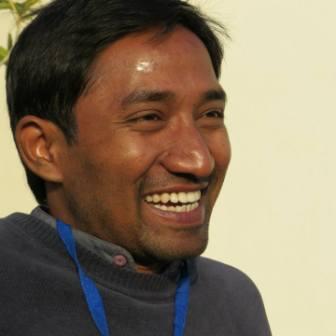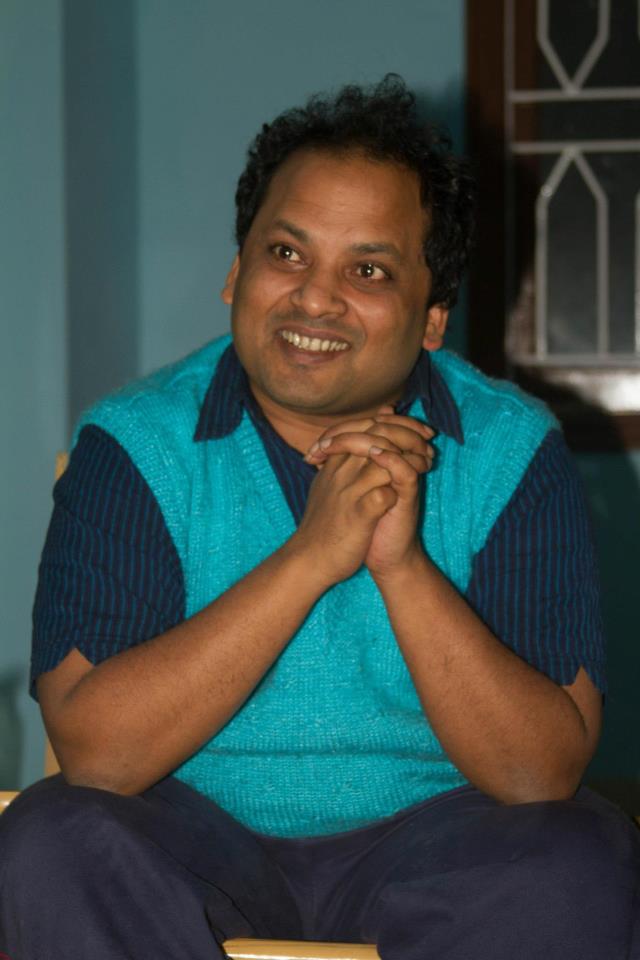Mayur Kudupale & K Swathi Sivadas
 The culture of debating on social issues has always paved the way for acquiring new learnings. The recent verdict on Sabarimala row was an inevitable topic among us, students. Our friends from Kerala, especially girls, debated enthusiastically that women’s entry to the temple should be allowed.
The culture of debating on social issues has always paved the way for acquiring new learnings. The recent verdict on Sabarimala row was an inevitable topic among us, students. Our friends from Kerala, especially girls, debated enthusiastically that women’s entry to the temple should be allowed.
Dissenting against the judgment, the only female judge in the five bench panel, Indu Malhotra, had commented, “issues of deep religious sentiments should not be ordinarily be interfered by the Court. The court should not interfere unless if there is any aggrieved person from that section or religion. The notion of rationality should not be seen in matters of religion. She also held that shrine and the deity are protected by Article 25 of the Constitution of India.” This comment by the only female judge present in the panel was soon taken up by various religious and right wing groups who gave stress to the religiously sensitive side of the issue. According to the judge, judiciary has no right to interfere in religious matters. She also noted that the parallel drawn between the Dalits and untouchasbility was ‘misconceived’, and that “in the case of temple entry, social reform preceded the statutory reform, and not the other way about.” We observe that the SC delivered the judgment based on rationality and constitutional morality but failed to suggest a way for implementing the verdict in the already tense state. The celebrated judgment also failed to take into account the lack of facilities, representation of women in devaswom boards, temples, priesthood and providing of security.
The ignorance of history is something the current movement for temple entry suffers from. The current issue has to be seen without detaching it from the history of the fight for temple entry, by both Dalits and women. In the run for saving a culture through which patriarchy is getting reinforced, we forgot Nangeli, we forgot Sahodaran Ayyappan, we forgot Periyar and Dr. Ambedkar. Temple entry is not an issue of saving religious practices in modern times, it is a historical battle that continues.
The fight for temple entry in Kerala, called the Vaikom movement, was led by Sahodaran Ayyappan. In Maharashtra, Babasaheb Ambedkar led the Kalaram temple entry movement; and there were many other movements in different parts of the country including the recent Sabarimala temple. In so-called upper caste temples, entry is always denied for Shudra and Ati Shudra. In Kerala, even the Nair community were kept out of enjoying the right to worship at temples until recently. Shudras and Ati-Shudras and tribals were denied temple entry due to untouchability, but what are the reasons for denying entry to women of menstruating, age including upper caste women? Why is the entry restricted to just men and women of non-menstruating age?
Vaikom movement and lower caste women’s entry
Renaissance Kerala running behind Lord Ayyappan has literally forgotten Sahodaran Ayyappan and the temple entry movement. The teachings and preaching of our forefathers and the great social reformers of Kerala are no more acknowledged in the Sabarimala row. The judgment was not aimed at social reform. Rather the aggressive and patriarchal society got unmasked through the verdict. Vaikom, a small town located in the central part of Kerala was then the part of the princely state of Travancore. Mahadeva temple was one of the temples out of several hundred temples in the state where the untouchables didn’t have access. The major social reformers who actually staged the protest for temple entry were T. K. Madhavan, K. P. Kesava Menon, Kelappan, K. G. Nair, A K Pillai, K Velayutha Menon, K K Sankaran Nair, George Josef. George Josef invited the great reformer Periyar to lead the movement. He agreed and successfully led the movement. Periyar was banned from entering Kottayam district by the district magistrate, ‘to prevent probable riot’. K. Ayyappan and Periyar others were the key players in the whole movement. The King restricted them from speaking in public spaces.
Women in the Vaikom struggle
Kerala has always had great social reformers including Nangeli whom the Kerala society is misremembering. The focus of the present row is again on women. The women leaders of the past cannot be kept aside. The present society should know that it might take another half a century for these leaders’ names to be printed in textbooks and records. The celebrated Vaikom movement witnessed many women activists taking over the protest when in the initial stage of protest when the ati-shudra women were denied entry to the temple. For the first time on May 24, 1924, a group of five shudra and ati-shudra women including Nagamai, Periyar’s wife decided to protest this. The women were halted at the entrance of the prohibited road by the police who told them that they could enter but informed the lower rank woman that she could not. The other four replied, “we are going together and won’t leave her alone at the entrance”. One of the activists from Vaikom movement, Kalyani called it “A struggle for one of the fundamental rights of human beings.”
The only question we would like to raise is about Kerala society’s consciousness regarding the contribution of S. Ayyappan and Periyar and his wife’s struggle. Periyar was imprisoned in the central jail. Finally, on the 23rd of November 1925, the agitation ended. It was Periyar and S. Ayyappan’s struggle for us. Can we revisit our history to tell the real stories of our struggle?
Dr. Ambedkar’s view on Vaikom
In Dr. Ambedkar’s view, the Satyagraha or the passive resistance sponsored by Periyar at Vaikom in the Travancore state was the most outstanding event, concerning the struggle of the Depressed Classes, ‘for vindicating the rights of the untouchable to use the road to which they were forbidden entry. Its moral pressure and the spirit of righteous assertion had a tremendous effect, and the orthodox Hindus, for a while, regained their civic sense and sanity and the road was thrown open to the untouchables‘ While leading the greatest movement against varnashrama, Dr. Ambedkar maintains accord with the movement in the south and supported such assertions against cruel practices of Brahmanism.
Women’s entry
After discussing the Sabarimala issue and the Vaikom movement we come to the issue of why the hate against women. Is it just gender-related issue or something else? We found the answer to our question in Dr. Ambedkar’s writings. Dr. B. R. Ambedkar wrote in ‘Castes in India’. He mentions three points on women from three historical perspectives. (i) Sati or the burning of the widow on the funeral pyre of her deceased husband; (ii) Enforced widowhood by which a widow is not allowed to remarry; (iii) Girl marriage. Dr.Ambedkar was the first man who tried to understand caste system through women’s role, otherwise Sir Denzil Ibbetson I.C.S and Census Superintendent of Punjab (1881) to L .S.S.O Malley ICS (1934) and other Indian sociologists also observed caste system during census and theorised on the caste system noticed the system of endogamy but nobody tried to explore the reason behind it. Dr. Ambedkar later said, “I know, no scientific explanation of the origin of these customs is forthcoming even today. We have plenty of philosophy to tell us why these customs were honored, but nothing to tell us the causes of their origin and existence. Sati has been honored because it is a ‘proof of the perfect unity of body and soul’ between husband and wife and of ‘devotion beyond the grave’ because it embodied the ideal of wifehood”.
Later Dr. Ambedkar said that “endogamy is the only characteristic of Caste and when I say Origin of Caste I mean The Origin of the Mechanism for Endogamy”. For the maintaining of endogamy system, they control women mobility. For the caste society to be maintained and to save religious notion it will always restrict women’s mobility. In the South Asian context caste is one of the biggest problems. Through endogamy system caste is maintained in society. It is a well-known fact that when Phule started to work for social reform he gave importance to women’s education and resistance. That’s why 13year old of Mukta salve in her essay questioned the Hindu religion. Later Dr. Ambedkar also fought for women’s empowerment.
In the Sabarimalai context, it is very disappointing to know that NSS women themselves supported the agitation against temple entry which is led by Nair males. Kancha Ilaiah’s thought is vital to the issues; “The Nairs are considered to be Savarna in the Kerala society but they do not have any spiritual rights within the temple system. They are the fourth Varna called Shudra, who were slaves for a long time in history, right from the days of Rigveda. They cannot become priests and they cannot interpret the Hindu scriptures called Vedas and Bhagavad Gita. There are no Hindu theological schools, colleges that allow Nairs to study theology, leave alone the lower Shudras (who consider themselves as Avarnas in the Kerala context). Yet Nairs, particularly Nair men, after establishing the Nair Service Society (NSS), remain so backward that they almost live at the feet of Brahmins as spiritual slaves. Such a tendency of the Shudras has done great damage to the Shudra social and spiritual culture of equality.”
India has always moved in two paths. One way is the revolutionary fold and the second counter-revolutionary fold. Those seeking complete social reform have a big challenge before them, as they have to fight with caste and gender oppression at the same time. Bahujan women must know this for their emancipation, for when the womenrebel, then the destruction of the caste system won’t take long. This was understood by Phule, Savitribai, Periyar, Babasaheb, Basava, Ayyankali, Kanshiramji etc…We as followers of our leaders should learn from our movements, we have our own perspective which was given by our leaders and our history.
~~~
Mayur Kudupale is a student of TISS. His interest areas are caste, social inequality, and mental health.
K Swathi is a student of TISS, Mumbai. Her interest areas are caste and social positioning of women.









